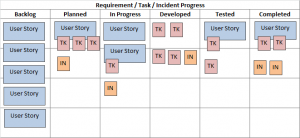
Google’s Helpful Content Patents & Technology
Natural Language Processing and Understanding
-
Semantic Analysis for Understanding Content: Google holds patents that describe using natural language processing (NLP) techniques to better understand the semantic structure of content. This involves analyzing the meaning of words and phrases within their context, allowing the search engine to assess the relevance and depth of the information provided.
-
Query Intent Matching: Patents related to understanding user query intent play a crucial role. These outline methods for determining what users are actually looking for when they type a query into the search bar, ensuring that the content served matches their informational needs.
Examples
-
“Extracting Semantic Relationships from Text” (US Patent No. 7,136,854): This patent outlines a method for analyzing text to extract semantic relationships, enabling a deeper understanding of content’s context and meaning. Such technology is foundational for evaluating the relevance and depth of informational content.
-
“Determining Query Intent” (US Patent No. 7,693,752): This patent describes techniques for determining a user’s intent when they perform a search query, which is crucial for delivering search results that closely match what the user is seeking. Understanding query intent allows Google to prioritize content that best answers users’ questions.
User Engagement Metrics and Their Evaluation
-
Analyzing User Interaction Signals: Several of Google’s patents focus on evaluating user engagement through interaction signals, such as click-through rates, time spent on a page, and bounce rates. These metrics offer clues about the content’s value to users, with high engagement suggesting that the content is useful and engaging.
-
Content Freshness and Update Frequency: Patents describing the assessment of content freshness indicate that regularly updated and current content might be favored. This aligns with the goal of providing users with the most relevant and up-to-date information.
Examples
-
“Modifying Search Result Ranking Based on Implicit User Feedback” (US Patent No. 7,716,225): This patent focuses on using user interaction signals, such as click patterns and dwell time, to adjust and improve search result rankings. It suggests that Google considers user engagement a significant factor in assessing content quality.
Content Quality Assessment Techniques
-
Evaluating Experience, Expertise, Authoritativeness, and Trustworthiness (E-E-A-T): While not explicitly detailed in a single patent, the principles of Experience, Expertise, Authoritativeness, and Trustworthiness are central to Google’s content quality assessment. Patents related to assessing the credibility of sources and the accuracy of content likely contribute to algorithms that prioritize high-E-A-T content.
-
Detecting and Penalizing Low-Quality Content: Google has patented methods for detecting low-quality content, including thin content, duplicate content, and content that appears to be written solely for SEO purposes rather than to inform or help users. These patents underlie the mechanisms for penalizing content that fails to meet quality standards.
Examples
-
“Systems and Methods for Promoting Content” (US Patent No. 8,626,668): Although not directly mentioning E-E-A-T, this patent encompasses techniques for evaluating the quality of web content. It could include assessing the authority of the content based on various signals, including the credibility of the source and references within the content.
-
“Detecting and Rejecting Annoying Documents” (US Patent No. 8,775,303): This patent details methods for identifying and downranking low-quality content that might be considered annoying or unhelpful to users. Techniques could involve analyzing content for spammy practices, low informational value, or poor user experience signals.
Using the Patents for Content Creation
Understanding the Semantic Web
Google’s approach, as illustrated by its patents, underscores the transition towards a semantic web where understanding the meaning and relationships between pieces of information is paramount. This evolution demands that content creators not only focus on keywords but also on the context, intent, and semantic richness of their content.
-
Content Depth: Creators are encouraged to develop content that thoroughly explores topics, providing comprehensive information that covers various aspects and related subjects. This approach ensures a dense network of semantic relationships, making the content more valuable to both users and search algorithms. Use the “skyscraper technique” by creating content that adds more value than what’s currently ranking at the top of search engine results pages.
-
Natural Language Use: Emphasizing natural, conversational language aligns content with the way people speak and search. This practice improves content’s accessibility and relevance in voice search and natural language queries, areas increasingly important as search technology evolves.
-
Semantic Richness: Include synonyms, related terms, and conceptually related topics to create a rich semantic network within your content. This helps search engines understand the context and relevance of your content more effectively.
-
Focus on User Intent & Needs: Use keyword research tools and question-based platforms (like Quora and Reddit) to understand what your audience is searching for. Tailor your content to match these intents, whether they’re looking for information, specific products, or solutions to problems.
Enhancing User Engagement
Patents related to analyzing user engagement signals guide content creators to focus on the user experience. High-quality, engaging content is more likely to generate positive user signals, such as longer dwell times and lower bounce rates, which are critical metrics for search rankings. Therefore, content creators are motivated to:
-
Content Formatting for Readability: Break content into digestible sections with headings, bullet points, and lists. Use short paragraphs and clear, concise language to improve readability and keep users engaged.
-
Multimedia Elements: Integrate images, videos, infographics, and interactive elements to complement text, break up content, and increase user engagement.
-
Encourage User Interaction: Include calls-to-action (CTAs) inviting users to comment, share, or explore related content. Engaging users in this way can improve dwell time and signal content value to search engines.
Prioritizing Credibility and Trustworthiness
The emphasis on evaluating the authority and trustworthiness of content sources pushes creators to establish and maintain credibility. This involves:
-
Citing Authoritative Sources: Linking to reputable, authoritative sources not only supports the content’s claims but also connects it to a broader semantic network of trusted information.
-
Showcasing Expertise: Creators are encouraged to highlight their expertise and qualifications, especially in fields where authority is crucial, such as health, finance, and legal advice. This can involve author bios, expert interviews, and evidence of professional experience or recognition.
Adapting to Content Freshness and Relevance
-
Regular Updates: Periodically review and update your content to keep it current and relevant. This not only serves your audience with the latest information but also signals to search engines that your content remains valuable.
-
Address Emerging Trends: Stay abreast of industry trends and news, and quickly produce content that addresses these developments. This can position you as a go-to source for timely and relevant information.
Writing and Editing Tools with Readability Insights and AI-Powered Suggestions
Tools that provide readability insights and AI-powered suggestions help create engaging content that’s easy to understand. They enhance clarity, making complex ideas more enjoyable for a wider audience.
1.
-
Features: Grammarly provides comprehensive writing assistance, including grammar, punctuation, and style checks. Its AI-powered engine offers contextual spelling corrections, vocabulary enhancements, and style suggestions to improve overall readability and engagement. Grammarly also offers a tone detector to help match the tone of your content with your intended audience.
-
Benefits: Beyond basic proofreading, Grammarly’s advanced features can help refine complex text, making content more accessible and engaging for readers.
2.
-
Features: The Hemingway App focuses on improving the readability of content by highlighting dense and complicated sentences, passive voice usage, adverbs, and complex words. It provides a readability score to help writers simplify their text for broader audience accessibility.
-
Benefits: This tool is especially useful for making content more concise and direct, ensuring that messages are communicated clearly.
3.
-
Features: ProWritingAid offers a comprehensive suite of writing and editing tools, including grammar and style checking, readability assessments, and genre-specific writing style checks. Its AI-driven engine provides contextual suggestions for improvements and explains the rationale behind each suggestion.
-
Benefits: With its in-depth reports, ProWritingAid helps writers understand their writing patterns and common mistakes, facilitating long-term improvement in writing skills.
4.
-
Features: QuillBot is a paraphrasing tool that uses AI to help writers rephrase or reword their content while maintaining the original meaning. It includes a grammar checker and a summarizer to improve sentence structure and conciseness.
-
Benefits: QuillBot is particularly useful for overcoming writer’s block, improving clarity, and avoiding plagiarism by generating alternative ways to express ideas.
5.
-
Features: Outwrite uses AI to transform basic drafts into well-crafted content. It offers grammar and spell check, style suggestions, and paraphrasing options to enhance writing. Additionally, Outwrite provides readability scores and statistics to guide improvements.
-
Benefits: Its strength lies in elevating the quality of writing through more sophisticated vocabulary and varied sentence structures, making content more compelling.
Conclusion
The post Use Google’s Helpful Content Patents As Content Creation Playbook appeared first on Search Engine People Blog.
About the Author: Ruud Hein
(10)
Report Post





